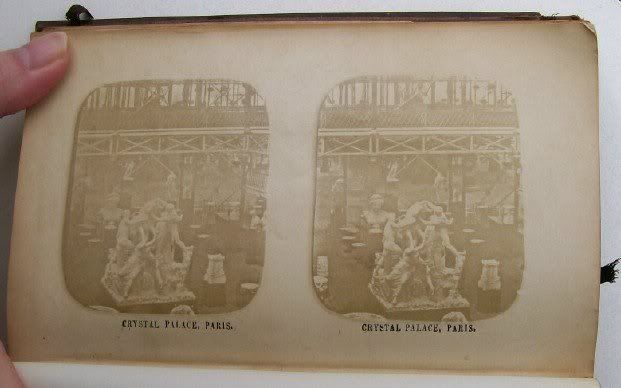
Are daguerreotypes known to be superior quality over ordinary stereocards?

I'l explain how I got my impression based on a series of quotes...I'm not sure why Ian LEITH's book gave you that particular impression.
That is false. The Negretti and Zambra volume of stereocards are the first set of images to show the palace during it's heyday.These images, published here for the first time, are the first set to show one of the most important buildings in England at the height of its fame in the late 1850s.
Only some? Try over HALF... In fact, Ken Kiss believes there might only be a handful he hadn't seen already. Also, photographs before and after the opening are easy to distinguish, and we already knew Delamotte took photos at both times.Although some of the images were already known, they were mostly confused with the similar views taken by the photographer, which showed the palace while it was under construction.
They aren't anywhere near the best images of the Crystal Palace at Sydenham. And Ian Leith fails to point out the condition of the Delamotte set.Delamotte's newly discovered photographs, the best images of the second Crystal Palace yet known, provide an opportunity to re-examine its significance.
Well, in most cases for most areas, this is true. Take Lewisham for example, there are some images from the 1850s and 1860s, but most came later, during the postcard era. However, where the Crystal Palace was a tourist attraction, most images came from the first 2 decades as opposed to later. Ian Leith quite rightly points out the lack of views for certain areas of the palace, like the Industrial Courts. He mentions how Delamotte took an artistic point of view and not a documentary "objective" type of view, but at the same time fails to point out that stereoviews were taken in this very way, and included glimpes of the Industrial Courts. Terry's scan showing the corner of the Musical Instruments Court is the only postcard I know that shows any of these courts. The palace just doesn't seem to have been as popular at the turn of the century as it had been in the previous decades. The early views of even the Fine Arts Courts are far more numerous.Later images, by constrast, are so numerous that we are overwhelmed by apparently overlapping and proliferating visual evidence.
Ian Leith finally mentions stereocards, but overshadowed in the same sentence by Delamotte's "large-format mounted prints". Yeah, right, but what about the quality, Ian???A huge number of stereo images proliferated in the late 1850s and 1860s at accessible prices, but large-format mounted prints like Delamotte's had a much more limited circulation.
